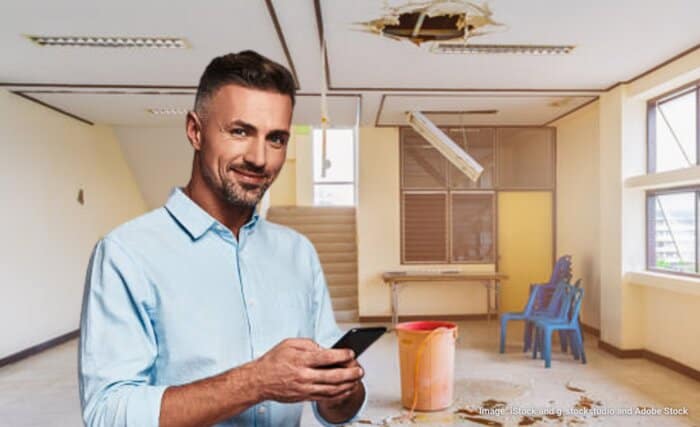What are your concepts on How can you handle tenant plumbing issues effectively?

Managing pipes concerns in rental properties efficiently is crucial for keeping lessee contentment and protecting the property's worth. Whether you're a property owner or a home manager, knowing exactly how to deal with these usual troubles can save you time and money while ensuring conformity with lawful responsibilities. Below's a step-by-step overview on exactly how to handle plumbing problems in rental buildings.
Record Every little thing
Keep in-depth documents of all reported pipes issues and the actions taken to settle them. Paperwork needs to include days, summaries of the trouble, interaction with renters, and receipts from professionals or plumbing technicians. This details can be vital for insurance policy claims, tax obligation deductions, and legal protection.
Use Qualified Professionals
Always make use of accredited and insured specialists for substantial pipes repair services and setups. This ensures that the work is up to code and can aid stay clear of obligation problems in case of accidents or more damages. It additionally reassures lessees that repair services are being managed skillfully.
Establish Clear Interaction
Encourage occupants to report any type of pipes problems as soon as they happen. Give multiple communication channels such as phone, email, or an occupant site to make it easy for them to reach out. Prompt actions to these records can protect against small issues from escalating right into significant problems.
Educate Renters
Enlighten your occupants concerning what comprises a pipes emergency situation and what does not. Give standards on just how to manage minor issues themselves, such as using a bettor to unblock a toilet. Also, educate them regarding what they ought to avoid taking down drains to stop blockages, such as oil, coffee grounds, and non-biodegradable things.
Regular Upkeep
Implement a regular upkeep routine for all pipes systems in your rental properties. Routine checks can aid recognize and fix concerns like leakages, slow drains, or rusty pipelines prior to they come to be serious. Think about employing an expert plumber to inspect the homes yearly or semi-annually.
Quick Reaction to Emergencies
Have a plan in position for replying to pipes emergencies. This must include having the contact information of trustworthy pipes solutions that supply 24/7 emergency situation repair services. Quick activity is vital to reduce damage in circumstances like burst pipelines or serious leakages.
Preventive Upgrades
Think about upgrading older plumbing systems and components to much more modern-day, efficient designs. This can reduce the frequency and extent of plumbing problems and reduced long-term maintenance expenses. It's additionally a marketing point for prospective occupants that value upgrades and modern features.
Renter Move-Out Inspections
Conduct thorough plumbing checks during move-out examinations to ensure that any type of problems are determined and attended to before a new renter relocate. This protects against disagreements with new tenants over pre-existing problems and ensures the property is in leading condition.
Understand Legal Duties
Recognize your lawful obligations concerning plumbing and general building upkeep. Many jurisdictions require property owners to ensure their residential properties are habitable and that all pipes systems are in good working order. Failure to attend to major concerns quickly can lead to legal actions from lessees.
Renter Repayments
If a plumbing concern requires immediate attention and the occupant resolves the problem by themselves, have a clear policy in position for repaying prices. Make certain lessees recognize they must obtain previous authorization for higher-cost fixings unless it's an absolute emergency situation.
Conclusion
Handling pipes problems in rental buildings calls for an aggressive technique and great interaction with occupants. By staying on top of maintenance, reacting promptly to emergencies, and utilizing certified specialists, property owners can maintain their buildings in exceptional condition and maintain good relationships with renters.
How to Handle Water Damage in a Rental Property
What is Water Damage?
Water damage is harm or destruction caused by water entering areas where it is not supposed to be. It can be caused by a variety of sources and can manifest in different ways. The most common examples of water damage include:
Leaking roof Plumbing leaks Appliance malfunctions Poor drainage Flooding Sewage backup Condensation Tenant negligence HVAC system issues Frozen pipes Is water damage dangerous?
Water damage itself is not inherently dangerous, but it can lead to various hazards and health risks if not promptly and properly addressed. The severity of these risks depends on the extent of the water damage, the source of the water, and how quickly it is mitigated.
Some potential dangers associated with water damage include structural damage, mold and bacterial growth, electrical hazards, water contamination, and pest infestations. In situations where mold and mildew have gone unaddressed, mold can start to develop within 24-48 hours of water exposure, and this can impose a serious health risk to tenants. In particular, mold spores and damp conditions can lead to respiratory issues and even make existing health problems worse, such as allergies, asthma, or immune disorders.
Water Damage in an Apartment - Who is Responsible?
If the water damage is caused by the tenant’s negligence, the tenant is responsible for the cost of repairs. If the water damage is caused by a defect in the property, the landlord is responsible for the cost of repairs. If the water damage is a result of natural causes, such as excessive rain, then the landlord is responsible, since the water intrusion likely occurred due to a defect in the property. Landlord Responsibility water damage in rental property
Since maintaining habitability is the landlord’s legal responsibility, landlords are responsible for any resulting structural damage caused by water damage. These structural damages may include damage to walls, roofs, ceilings, and flooring. If water damage has affected the rental property’s original structure, the landlord is responsible for repairing or replacing those materials. Therefore, landlords should have property insurance that covers the structural components of their rental property so that they can receive help with the costs of covered events.
Preventative measures can also help landlords avoid massive renovations. Preventative maintenance may include conducting regular inspections to identify and address potential water damage before it becomes a major and urgent problem.
If a landlord fails to meet their responsibilities regarding water damage, it can lead to legal disputes and potential liability. Tenants who believe their landlord is not addressing water damage issues in accordance with California law can seek legal advice or contact local housing authorities for assistance.
https://www.goodlifemgmt.com/blog/water-damage-in-a-rental-property/

Do you enjoy reading up on How to Handle Plumbing Issues in Rental Properties? Make a comment down the page. We will be happy to listen to your feelings about this article. Hoping that you come back again in the future. Are you aware of another person who is in to the niche? Feel free to share it. Kudos for being here. Return soon.